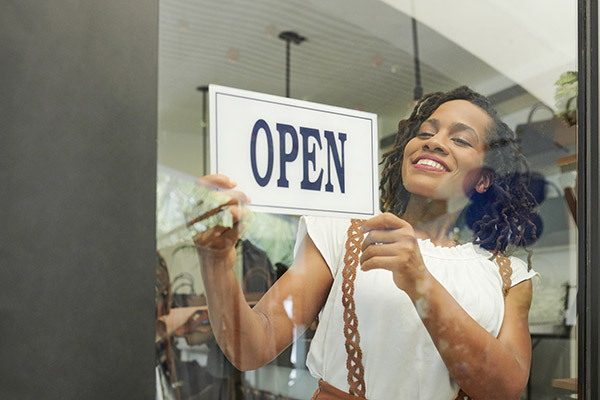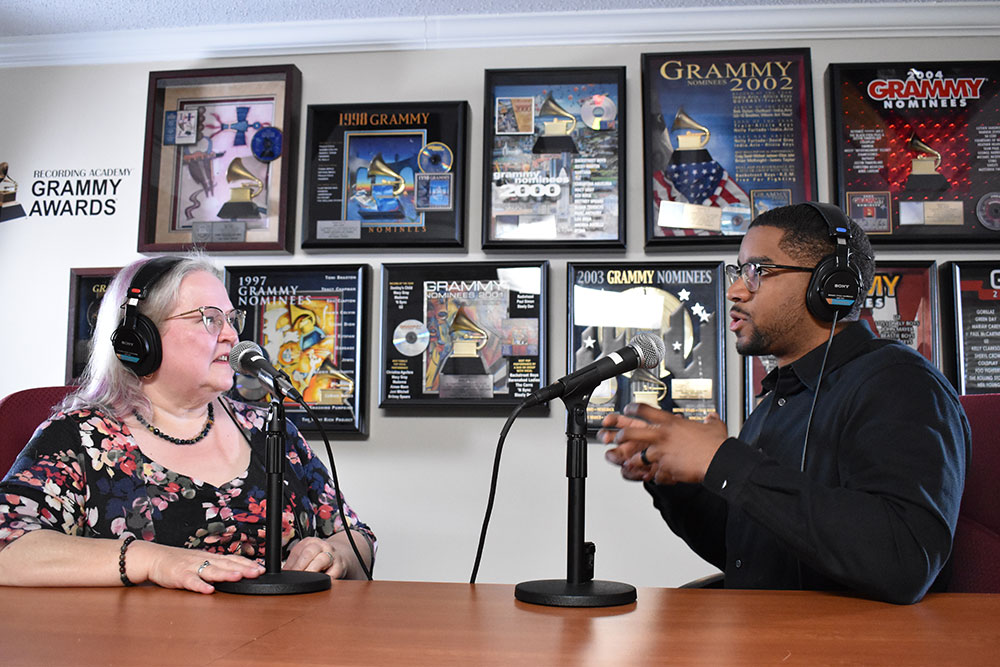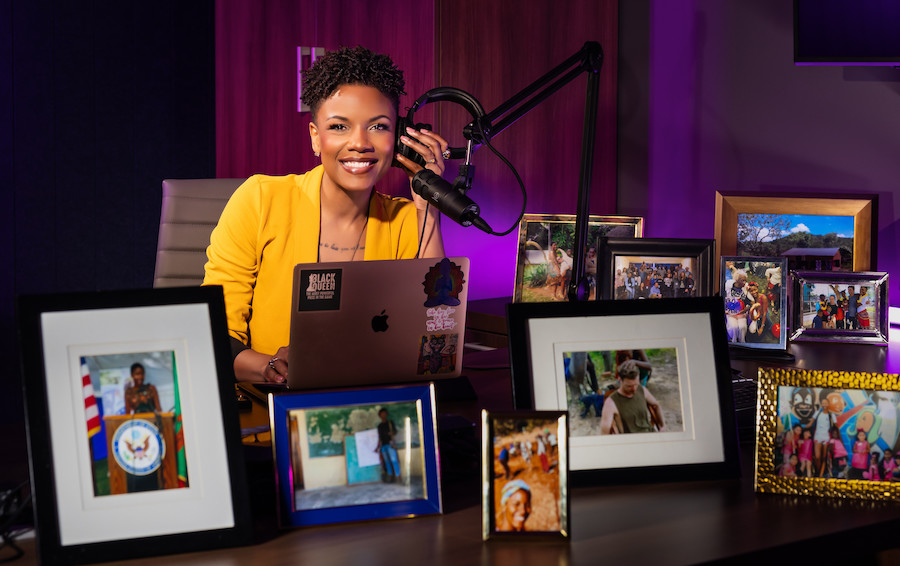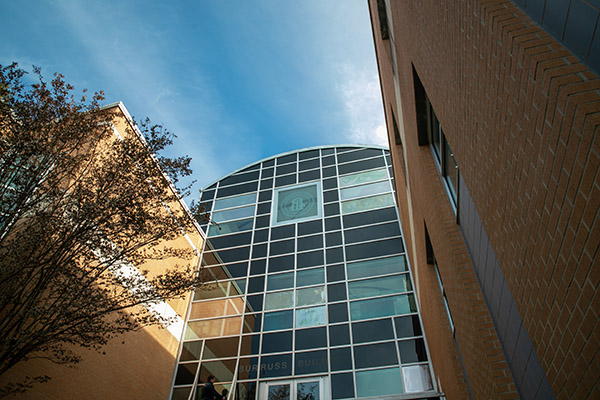
Coles College Doubles Presence at Undergraduate Research Symposium
KENNESAW, Ga. | Apr 30, 2020
Business students – who are taught to look for the value in every situation – are beginning to find value in the world of academic research.
Out of the 350 Kennesaw State University undergraduate students who presented research at the Symposium of Student Scholars in April, more than one-fourth were students in the Michael J. Coles College of Business. A total of 92 Coles College students participated in the symposium, up from 45 in 2018 and 11 in 2017 (the event was not held in 2019).
Helping drive this growth in Coles College’s participation is Mona Sinha, an international marketing professor who has increasingly encouraged her students to conduct research, and has made symposium participation a major part of her senior-level courses.

Launched in 1996, the Symposium of Student Scholars showcases the work of Kennesaw State undergraduate researchers conducted throughout the previous academic year. The event has not traditionally drawn large numbers of Coles College students.
However, starting in 2018, Sinha began giving seniors the option to present their final research projects at the symposium in lieu of in-class presentations. While most of her students took advantage of the offer in 2018, every one of them did so this year.
“I used the carrot and the stick approach,” she said. “I offered them 2 percent bonus points for participation. And, because they could swap out their end-of-semester presentation for this one, it effectively meant we could end class a week earlier. I also emphasized the value the experience would add to their resumes and social media profiles.”
Of the 92 Coles College students at the symposium, 90 were Sinha’s international marketing students, while the remaining two were from the Department of Information Systems. Sinha organized the students from her classes into 12 groups and assigned them to each choose a business and write a case study describing the challenges it faced while expanding into a new international market.
Although Sinha’s incentives are what initially motivated her students to submit their research, the experience of working with a group to conduct research, develop a presentation with visual aids, and present to a panel of judges helped the students develop valuable skills for their lives after graduation.
“We got a taste of presenting in front of professionals rather than just our peers,” said Kamari Davis, who was part of a group that researched the lukewarm response technology firm Apple received when it began selling iPhones in India. “I also learned the value of having a great team. In the workforce, teamwork is crucial. These types of opportunities help reveal the real possibilities we have as students and future leaders.”
To further motivate her students, Sinha incorporated an element of competition into the project, giving out awards for exemplary presentations. Davis’s project won Best Presentation. The full list of winners includes:
- Best Presentation: “How Can Apple Be More Fruitful in India?”
Issabella Bertolani, Pamela Diaz, Zack McPherson, Amani Elchaar, Michal Kardacz, Kamari Davis, Nakia Abdul, and Lawrence Ofili - Best Poster: “From Delhi to Mumbai, Apple Seeks a Bigger Slice of The Pie”
Taylor Greer, Brent Cassidy, Mike Williams, Nick Hill, Chandler Burger, Adam Pedraza, Steven Wehde, and Caleb Fortney - Best Case Study: “Zara: Facing Fast Fashion Challenges in China"
Daniela Schaich Graniel, Alexxus Finnell, Caitlin Hopkins, Candace Salters, Elimay Baez, Larissa Hernandez, Madison McIntyre, and Raven Lee - Best Case Writers: “Mobike’s Bike-Share Battle in India”
Amber Cranston and Sam Kroll
The students faced an unexpected challenge while preparing for the symposium. Halfway through the semester, the COVID-19 pandemic led Kennesaw State to cancel all in-person events for the remainder of the academic year, meaning the symposium became a virtual event. While acknowledging the strain this put on their processes, the students found they were able to adapt.
“Changing our presentation to an online version was definitely the most challenging part,” said Issabella Bertolani, who was also a member of the Best Presentation-winning group. “We were all ready to do the face-to-face version and switching to [Microsoft] Teams seemed like it would be the biggest struggle. Luckily, we all enjoyed working on this enough that we didn’t really view it as a struggle.”
Sinha worked hard to prepare her students for this unprecedented change to the symposium’s format.
“I made sure that I communicated extensively and offered them support,” she said. “I was available to answer emails on weekends and evenings during the weeks leading up to the symposium. They never felt like they were alone, which can be scary in a virtual environment. My students were awesome. No matter what was thrown at them, they handled it.”
Sinha is not only interested in encouraging undergraduate students to conduct research, she is also passionate about them continuing to develop it. She is working with multiple groups on submitting their research to the 2020 Atlantic Marketing Association Conference and to pursue publishing it in a future issue of the Kennesaw Journal of Undergraduate Research.
Throughout everything, Sinha’s goal has been to show her students that they all have valuable research and presentation skills that will be assets going forward.
“My greatest joy when they succeed is that it proves they don’t have to be honors students,” she said. “If students are given the right opportunity and guidance, and are willing to work as hard as I can push them to, then they can shine just as bright.”
-Patrick Harbin
Related Posts

Kennesaw State Partnership Equips Local Entrepreneurs with Tools for Success

Gathering Spot CEO Ryan Wilson on Building a Social Club to Inspire Connections.

Kennesaw State MBA student leveraging degree work for a cause

CEO Magazine Ranks Kennesaw State Executive MBA Top Program in Georgia, No. 11 in the World














